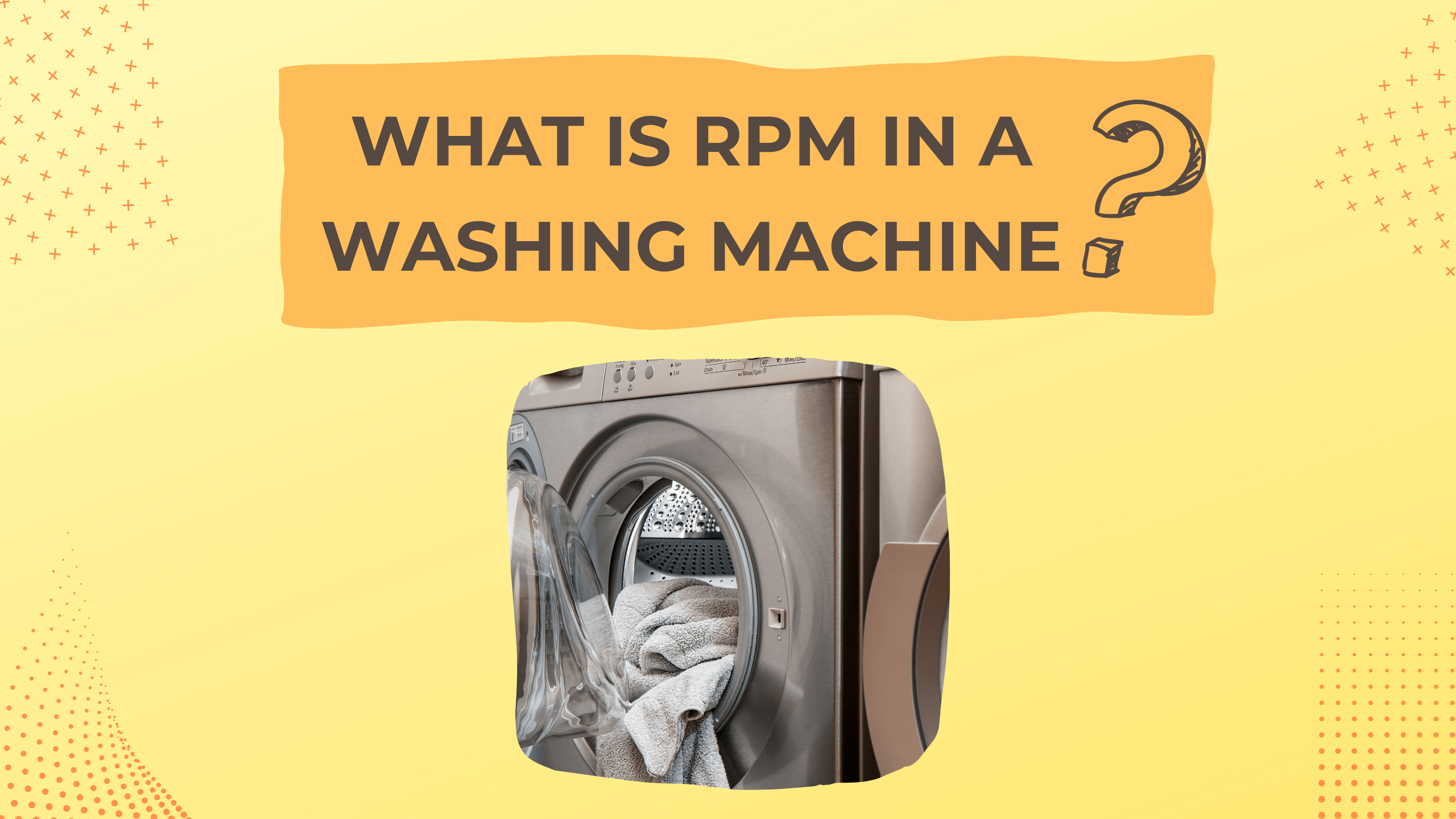Synopsis
What is RPM in a washing machine? RPM, or Revolutions Per Minute, measures how fast the washing machine drum spins. Higher RPM speeds extract more water, reducing drying time, while lower RPM is gentler on delicate fabrics. It’s a key factor in cleaning efficiency and fabric care, with many machines offering adjustable RPM settings for flexibility.
- Synopsis
- Understanding RPM: Definition and Meaning
- The Science Behind RPM in Washing Machines
- RPM and Washing Machine Efficiency
- Comparing RPM Levels in Washing Machines
- How to Choose the Right RPM for Your Needs
- Bestselling Front Load Washing Machines on Amazon
- Tips for Using RPM Effectively
- Modern Innovations in RPM Technology
- Common Myths About RPM in Washing Machines
- Popular Front Load Washing Machines on Amazon
- Conclusion: Why RPM Matters in Washing Machines
- FAQs
Understanding RPM: Definition and Meaning
What Does RPM Stand For?
RPM stands for Revolutions Per Minute, a measure of how many full rotations the drum in a washing machine completes in one minute.
This metric is critical in determining the speed at which the drum spins during the washing and spinning cycles.
Think of RPM as the engine of the washing process. When the drum rotates faster, it can extract water more efficiently, making your clothes dryer when the cycle ends.
A machine with adjustable RPM offers more flexibility to handle a variety of fabric types, from delicate silks to heavy denim.
Why Is RPM Important in Washing Machines?
RPM plays a significant role in the washing process. It directly affects how well the machine cleans clothes, removes stains, and extracts water during the spin cycle.
With higher RPMs, you can expect better water extraction, reducing drying time.
However, it’s important to understand that a higher RPM isn’t always better, as it may not suit all types of fabrics.
Related Reading: 6 Best Front Load Washing Machines Under 30000
The Science Behind RPM in Washing Machines
How RPM Affects Cleaning Performance
RPM influences the friction and agitation of clothes against each other and the drum.
This friction is necessary to loosen dirt and stains, especially for heavy-duty cleaning.
Lower RPMs are ideal for gentle agitation, making them suitable for delicate fabrics that can easily tear or lose shape.
The Role of RPM in Spin Cycles
The spin cycle is where RPM shines the most. During this phase, the drum rotates rapidly to remove excess water.
Machines with higher RPM (e.g., 1200-1400 RPM) can extract more water, making clothes almost ready for immediate ironing or drying.
On the other hand, a low RPM (e.g., 600-800 RPM) is gentler but less effective at water extraction.
RPM and Washing Machine Efficiency
Energy Consumption and Higher RPMs
You might think that higher RPMs consume more energy, but modern machines are designed to balance power efficiency with performance.
Some energy-efficient washing machines use innovative technology to optimize water extraction without significantly increasing energy use.
The Balance Between RPM and Wear and Tear
While higher RPMs can save time, they can also increase wear and tear on fabrics and the machine’s drum.
Over time, excessive use of high RPM settings may cause premature damage to your clothes or mechanical components.
Finding the right balance is key to prolonging the lifespan of both your garments and your washing machine.
Comparing RPM Levels in Washing Machines
Low RPM Machines: Pros and Cons
- Pros: Gentle on fabrics, reduced noise levels, and energy efficiency.
- Cons: Less effective water extraction, and longer drying times.
High RPM Machines: Pros and Cons
- Pros: Quick water removal, reduced drying time, and improved cleaning for heavy loads.
- Cons: Can be rough on delicate fabrics, slightly noisier, and potentially higher energy use.
Optimal RPM for Different Fabrics
- Delicates (Silk, Lace): 400-600 RPM
- Cotton and Synthetics: 800-1000 RPM
- Heavy Fabrics (Denim, Towels): 1200-1400 RPM
Related Reading: Why Front Loading Washing Machines Are Better?
How to Choose the Right RPM for Your Needs
Considering Fabric Types and Load Sizes
Assess the types of fabrics you wash most frequently.
If your wardrobe is filled with delicate garments, a lower RPM setting will suffice.
For families with heavier loads, such as bedding or towels, a higher RPM machine might be a better choice.
Matching RPM with Machine Capacity
Large-capacity machines often come with higher RPM capabilities to handle bigger loads effectively.
Ensure the RPM aligns with the machine’s drum size to avoid underperformance or excessive noise.
Key Questions to Ask Before Purchase
- Does the machine offer adjustable RPM settings?
- How does the RPM impact energy efficiency?
- Is the machine suited for the fabrics you frequently wash?


